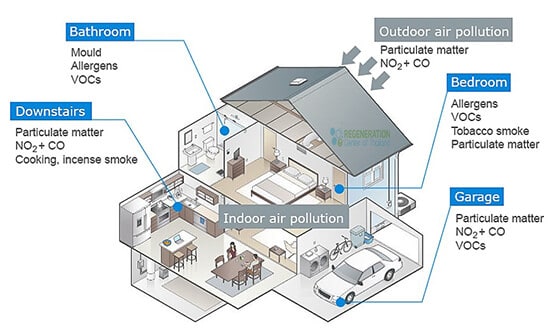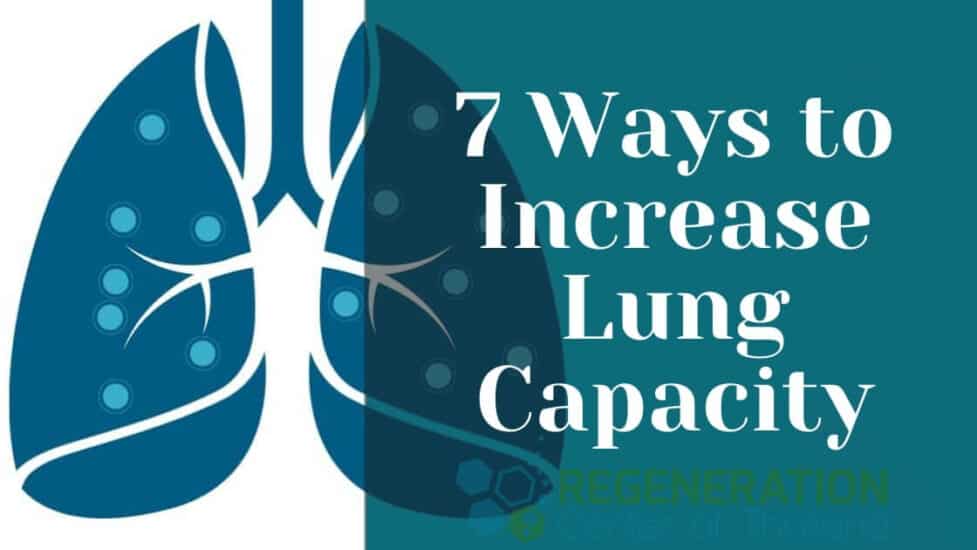The lungs play a critical role in proper body function by allowing for the effortless exchange of oxygen and carbon dioxide. It’s not until we have difficulty breathing that we notice, But the truth is, our lungs need just as much daily care and attention as our body does. Specific lung exercises can help it work more efficiently. This can reduce shortness of breath when a person’s lung capacity is limited.
Cardiovascular health can be affected for many reasons, including smoking, exposure to mutagenics, air pollution, aging, or other factors like COVID-19 that can make the lungs work less efficiently due to restrictions on lungs’ overall capacity. For patients with asthma, autoimmune diseases such as AS, lung scarring disease, cystic fibrosis or chronic obstructive pulmonary disease, this means a daily battle.
A person with advanced lung disease might not even be able to try breathing exercises, which would help reduce consistent shortness of breath caused by damage to lung function. Breathing clean air helps deliver oxygen to nearly every cell in our body. Without enough oxygen, people are susceptible to chronic health problems, respiratory distress, and even heart disease. Our lungs are generally in the rest phase. Even during most daily exercises, they only reach 50 percent of their overall capacity. To reach optimal lung function, you need to challenge the lungs with more frequent and intensive cardiovascular activity. Such activities offer many benefits, including removing toxins and tar formations caused by environmental pollutants, medications, allergens, dust, or nicotine-related smoking. These recommended methods are part of our recommended functional healthcare program and offers seven ways to help you reduce frequent shortness of breath in healthy people & patients with respiratory infections or interstitial lung diseases. Learn about stem cell therapies.
Belly breathing & Diaphragmatic breathing
Belly breathing uses the diaphragm muscle, which separates the organs from the lungs. Diaphragmatic breathing works by fully engaging the abdominal muscles in the stomach and diaphragm in purposeful breathing. Each inward breath requires pulling the diaphragm down with conscious force. Belly breathing exercises help train our lungs to fill more efficiently. By lowering the diaphragm muscles as we breathe in, we get a much deeper inhale. This breathing technique is very popular with professional opera singers to help increase their lung capacity naturally.
Other types of easy breathing exercises include:
- Pursed-lips Breathing
- Numbered Breathing
- 4-7-8 Breathing
- Alternate nostril breathing
- Equal breathing
- Lion’s breath exercises
- Sitali breathing technique
- Bhramari technique & Humming bee breath
- Coherent or Resonant breathing
- Rib Stretches
Cardiovascular Exercises and Aerobics
Cardiovascular health via exercises such as aerobics plays a vital role in building lung capacity by making our huge muscle groups all move at rhythmic speed. This full-body workout helps strengthen our lungs and heart which can help improve overall endurance. By training the lungs and heart, our body can use oxygen much more efficiently and enhance our breathing.
Some recommended cardiovascular workouts are:
- Indoor Cycling
- Biking Outdoors
- Sports like basketball or football
- Jogging
- Swimming
- Dancing
- Jump rope
Workout In Higher Elevations
The overall oxygen content levels are much less at higher altitudes, so it’s an excellent way to push the lungs and increase overall capacity. Exercising at higher altitudes can be dangerous, so it’s best to start slow and slowly buildup tolerance to the higher elevations. It’s generally a good idea to give your body some time to acclimatize to the high altitudes properly. It might be good to go with a friend or qualified instructor, as unsupervised workouts in higher elevations can increase the risk of getting altitude sickness.
Get Enough Vitamin D
Vitamin D is known to influence all innate immune effectors and therefore can play a vital role in how our lungs recognize and respond to dangerous airborne pathogens.
A study released last year found that higher levels of vitamin D are associated with better overall lung function and can help protect some people against COPD flare-ups or inflammation, which will allow them to breathe more comfortably and boost your cells naturally. Getting your daily dose of Vitamin D from the sun is usually not an issue in the summer months or if you live in a tropical country like Thailand, but, depending on where you are, you might not get enough vitamin D from the sun alone. In such instances, it might be wise to invest in vitamin D supplements at least until the weather conditions are favorable. Natural Vitamin D and anti-inflammatory compounds are also found in many foods we eat, such as egg yolks, Shiitake mushrooms, fish, yogurt, and red meat.
Improve the air quality inside the home
For most big-city dwellers, air pollution is an unavoidable fact of life. Even short bouts with lousy air pollution can affect your lungs negatively. But thanks to modern  technologies, we can take steps to better the air quality at home. This can be done using HEPA air filters to get rid of dust or add more house plants to keep the air fresh. On good days when air pollution levels are low, opening the windows is a great way to get good clean, fresh air.
technologies, we can take steps to better the air quality at home. This can be done using HEPA air filters to get rid of dust or add more house plants to keep the air fresh. On good days when air pollution levels are low, opening the windows is a great way to get good clean, fresh air.
Stay Hydrated – Drink Water
Drinking enough water is also critical for pulmonary health and the rest of our body functions. Water is a powerful anti-aging tool that helps to keep our blood flowing to and from the lungs at total capacity. If you do not like buying water bottles every day, consider investing in a good reusable water bottle that can be filled and transported with you to work or while running errands.
Long Term Benefits of UC-MSC+ Lung Stem Cells
Stop Smoking
While obvious, this fact really cannot be stressed enough. Smoking cigarettes or vape pens are one of the worst things you can do to your lungs and can cause countless other issues like CHF, heart disease, neuropathy, lung cancer, and ED. The good news is that our lungs can regenerate themselves naturally. The first month after quitting is usually the most difficult, but your lung function will improve. This gradual improvement will help increase blood circulation. Nine months after quitting smoking, the cilia in the lungs begin to function normally, and unhealthy symptoms like shortness of breath or dry coughing become less frequent.
The ability to breathe is typically essential to our health and well-being. Utilize the techniques listed above to help improve lung capacity naturally. Just try some of these exercises to increase your lung capacity, and within a short couple of days, you should notice a change. The Regeneration Center believes that enhancing your lung capacity has many benefits, so fatigue will not keep striking you down quickly while playing with your kids or exercising.

